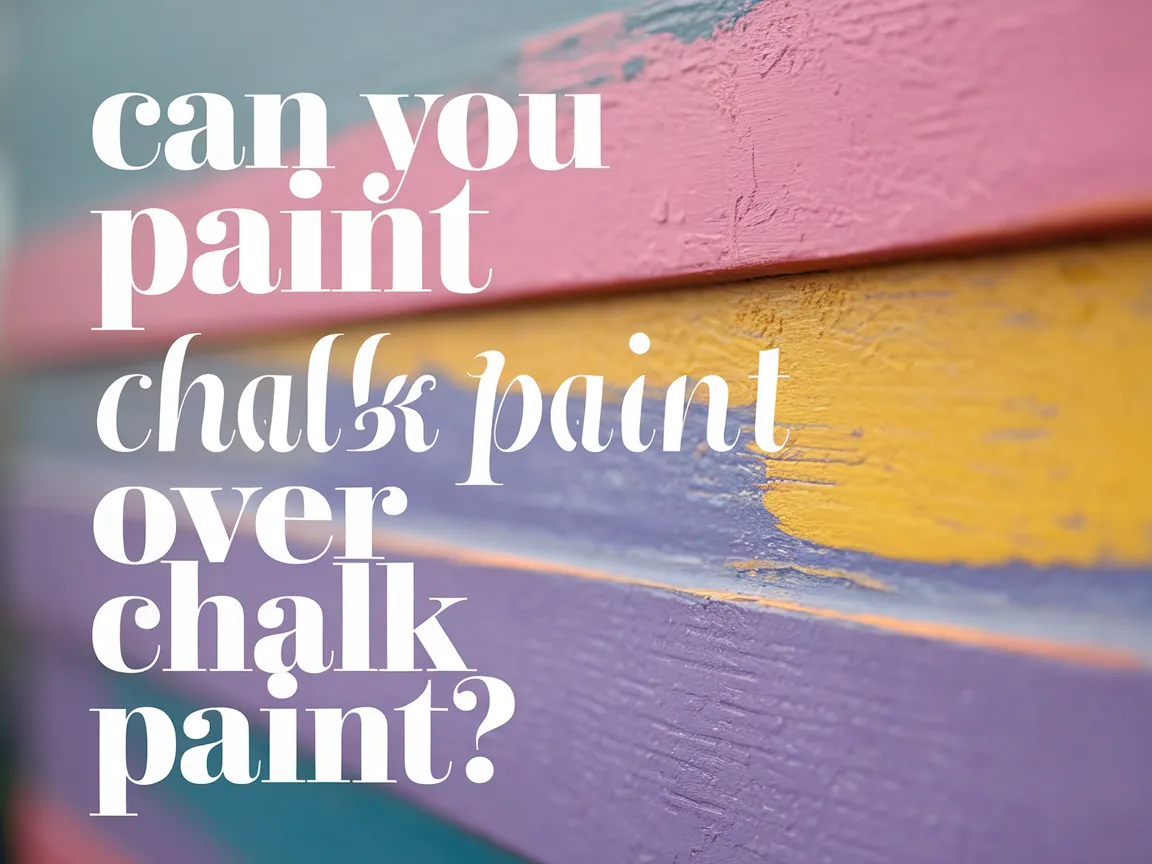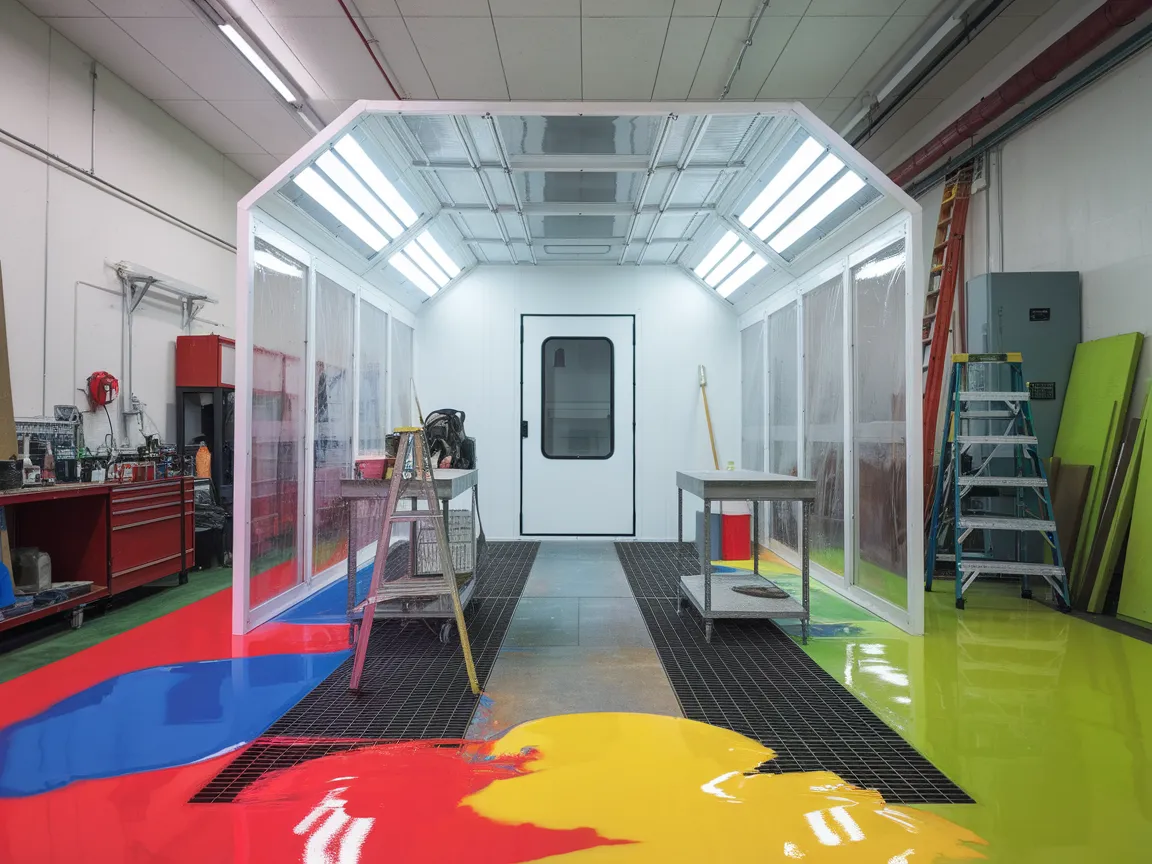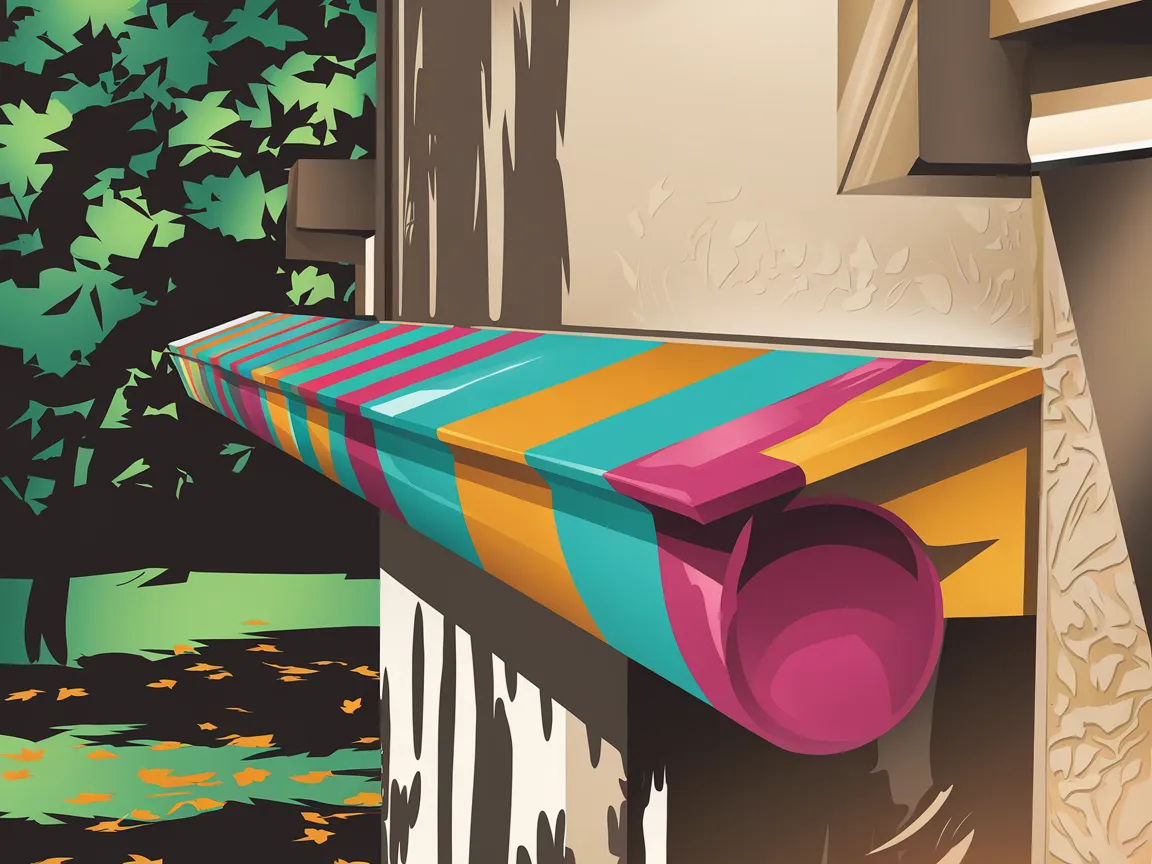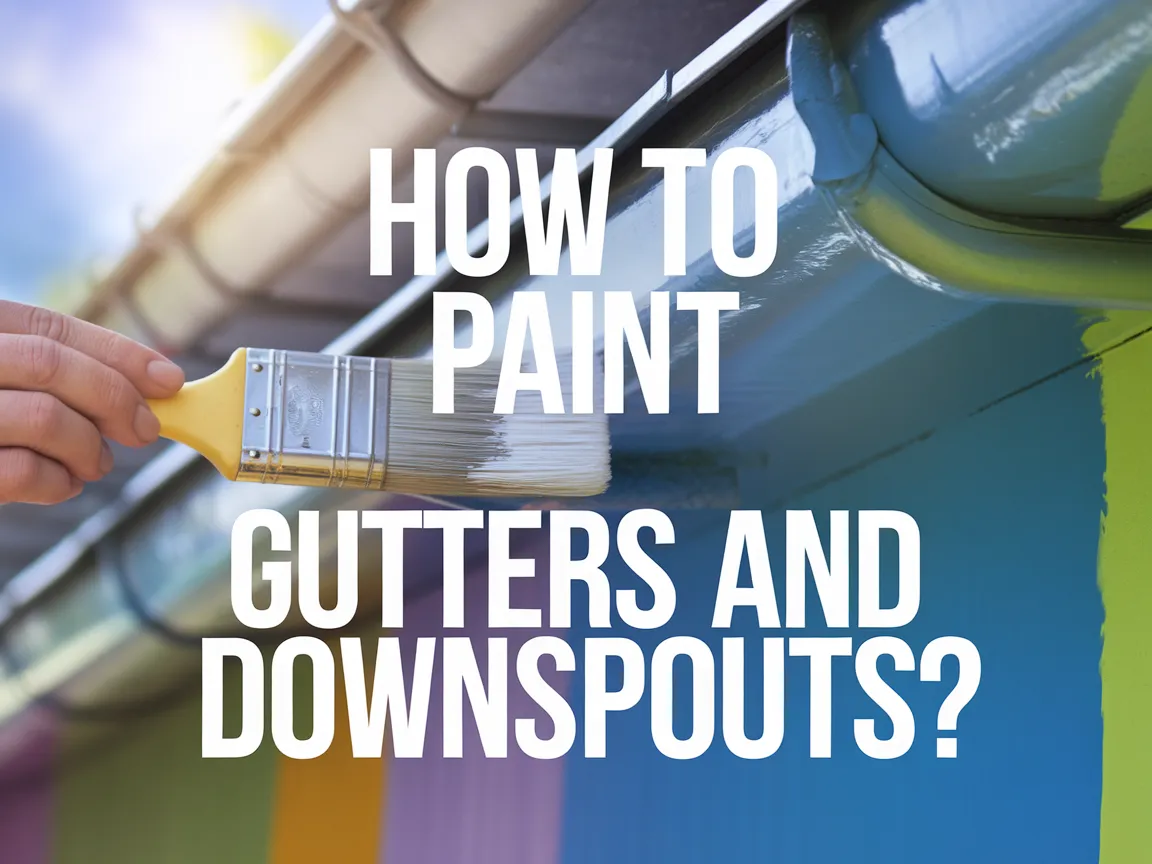How Much Does A Can Of Paint Cover?
Published on: May 16, 2025 | Last Updated: January 7, 2025
Written By: Sarah McClintock
Paint is like magic color juice! It dresses up walls and makes things look pretty.
Understanding how much a can of paint covers is super important. I once painted my room without knowing this, and I ran out halfway. It wasn’t fun!
In this guide, you’ll learn about essential prep work, how to calculate paint coverage, different paint types, and common mistakes to avoid. We’ll also explore creative DIY project ideas to make your space shine, like how much to paint a minivan or a ford ranger, and the recommended color palette for your projects.
Contents
- 1 How Much Does a Can Of Paint Cover?
- 2 What is Paint?
- 3 Essential Preparations Before You Start Painting
- 4 Step-by-step Guide to Calculating Coverage
- 5 Types Of Paint and Their Coverage Capacities
- 6 Factors Affecting Paint Coverage
- 7 Common Issues When Estimating Paint Coverage
- 8 Calculating Coverage for Different Paint Finishes
- 9 Paint Coverage When Using Primers
- 10 Estimating the Amount of Paint for Unique Projects
- 11 Estimating Paint for Textured Surfaces
- 12 Frequently Asked Questions About Paint Coverage
- 13 Conclusion
- 14 Useful Resources
How Much Does a Can Of Paint Cover?
A standard can of paint covers about 350 to 400 square feet (32 to 37 M²). Factors like texture and color can affect this. For best results, apply two coats. Always check the label for exact coverage details. Painters often use specific techniques to maximize paint efficiency and protect surfaces, such as whitewashing tree bases strategically.
What is Paint?
Paint is a mixture of pigments, binders, solvents, and additives that provides a protective or decorative finish. Typically, a gallon (3.78 Liters) of paint covers about 350 to 400 square feet (32 to 37 Square Meters), depending on the application method and surface type. If you encounter unwanted paint stains, you might wonder about effective paint removal techniques.
You might wonder how much a can of paint covers. I remember painting my room and marveling at how quickly I went through cans while trying to achieve the perfect shade on the walls.
During my first DIY project, I used paint on some old furniture. It was eye-opening to see how a simple can could transform a space. I began to think about how much paint I’d need for larger projects, like painting a car or a minivan. Knowing how much paint covers helps you budget your time and money accordingly. Professional painters often warn about unexpected paint damage risks that can impact your vehicle’s finish, protecting your car’s paint surface.
Essential Preparations Before You Start Painting
What do you need to consider before diving into how much a can of paint covers?
- High-Quality Paint: Choose a good paint brand, like Behr Premium or Sherwin-Williams Pro Classic. It provides even coverage, covering 32 to 37 m² (350 to 400 Square Feet) per gallon.
- Measuring Tape: Get a reliable measuring tape, such as the Komelon 6566. Accurately measuring your surface area saves money and extra trips to the store.
- Paint Calculator: Use an online paint calculator, like the one from Home Depot. This tool helps you determine how much paint you’ll need for your project.
- Drop Cloths: Have drop cloths, like the Trimaco EconoRoll, to protect your floors and furnishings from spills.
We have now covered essential preparations before starting your painting project. Next, we will explore a step-by-step guide to calculating coverage.
Also See: How Many Times Can You Paint a Wall? Learn the Limit!
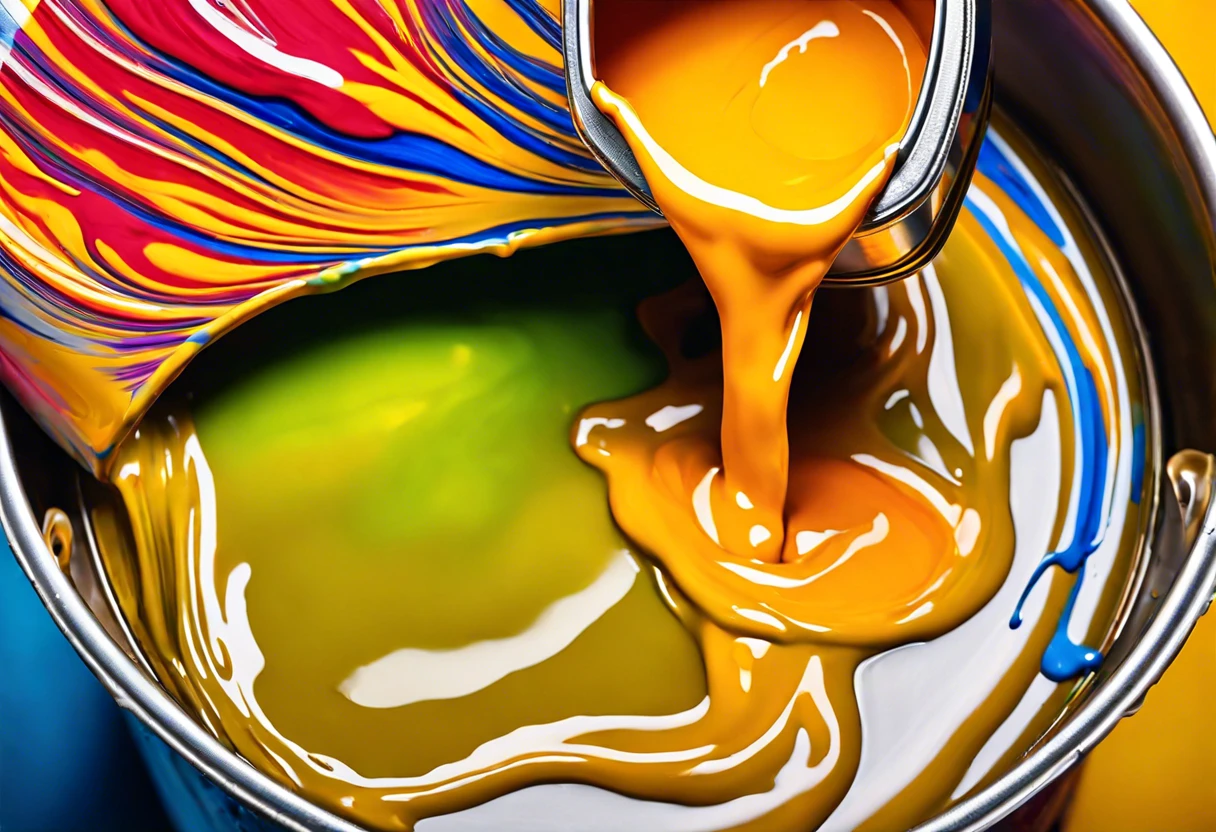
Step-by-step Guide to Calculating Coverage
Here are the steps to figure out paint coverage for your project.
-
Measure the Area to Be Painted
First, grab a tape measure and determine the total surface area. For walls, measure the height and width, then multiply (E.g., A Wall 3 M (10 Ft) high and 4 m (13 Ft) wide has an area of 12 m² (130 Ft²)).
For odd shapes, break them down into rectangles. Add those areas to find the total coverage needed.
-
Check the Paint Can for Coverage Information
Look at the label on your paint can; it usually lists crucial coverage information. Standard paints typically cover 10-12 m² (100-125 Ft²) per liter (Quart), though some formulas may cover more or less. If you’re wondering about specific painting techniques like covering dark surfaces, painting over black paint requires special preparation.
This coverage depends on the color and texture of the wall. Darker shades or textured surfaces usually require more paint, so plan accordingly.
-
Calculate the Total Coverage Needed
Now, take the total area you measured and divide it by the coverage listed on the paint can. For instance, if your area is 30 m² (323 Ft²) and the paint covers 10 m² (100 Ft²) per liter (Quart), you’ll need about 3 liters (3.2 Quarts). When mixing paint colors, you might want to explore creating custom black paint for your specific project.
Also, factor in additional surfaces such as ceilings or trim. It’s wise to round up your total to avoid running short.
-
Consider the Number Of Coats Required
Finally, decide how many coats of paint you’ll apply. One coat might suffice, but if you’re using lighter colors over darker surfaces, you might need two or even three coats for the best finish.
This affects your total paint budget. Keep in mind each coat will require roughly the same amount of paint as the first, so multiply your earlier measurement accordingly.
We have now covered the process of calculating coverage in detail. Next, we’ll explore different types of paint and their coverage capacities.
Types Of Paint and Their Coverage Capacities
Let’s explore different types of paint: single-stage, three-stage, spray paint, and specialty paints.
-
Single-stage Paint
Single-stage paint combines color and finish in one product. A gallon (3.78 Liters) typically covers 300 to 400 square feet (27 to 37 Square Meters).
-
Three-stage Paint
This system requires a base coat, mid-coat, and clear coat. A gallon (3.78 Liters) usually covers 150 to 200 square feet (14 to 19 Square Meters) per coat, depending on the application.
-
Spray Paint
Spray paint is ideal for small projects and touch-ups. A standard 12 oz (355 Ml) can covers 20 to 25 square feet (1.9 To 2.3 Square Meters).
-
Specialty Paints
This category includes paints like epoxy for floors and heat-resistant paints. Coverage varies, but expect around 200 square feet (18.5 Square Meters) per gallon (3.78 Liters) for most specialty paints. If you’re considering painting surfaces like blacktop, you might want to explore specific techniques for blacktop painting.
Reflecting on my experiences, the efficiency of single-stage paint is especially notable for DIY projects. Its ease of use makes it my go-to choice for great results without hassle.
We’ve wrapped up the various paint types and their coverage abilities here. Let us turn our attention to factors influencing paint coverage.
Factors Affecting Paint Coverage
What factors affect how far your paint goes in a project?
-
Surface Texture: Rough surfaces absorb more paint, reducing coverage efficiency.
-
Paint Type: Different paints, like single-stage or three-stage, have varied coverage rates.
-
Application Method: Spraying versus rolling applies paint differently, influencing total coverage.
-
Color and Tint: Dark colors often need more coats for effective hiding, impacting overall coverage.
You should now have a good understanding of the elements influencing paint application and spread. In the next part, we’ll discuss frequent challenges in estimating paint coverage.

Common Issues When Estimating Paint Coverage
My friend thought one can of paint would cover his entire fence. With odd angles and varied textures, his estimate was off.
To fix this, he should calculate the square footage. One gallon (3.785 L) covers approximately 350-400 sq ft (32.5-37 M²) on smooth surfaces. Factor in 20% extra for texture and absorption!
Calculating Coverage for Different Paint Finishes
Different paint finishes can dramatically affect how much area a can covers. Here’s a breakdown:
| Paint Finish Type | Approx. Coverage (square feet per gallon) | Best Use Cases |
|---|---|---|
| Matte Finish | 300 – 350 sq ft (27.9 – 32.5 m²) | Low-traffic areas, ceilings |
| Eggshell Finish | 350 – 400 sq ft (32.5 – 37.2 m²) | Living rooms, bedrooms |
| Satin Finish | 350 – 400 sq ft (32.5 – 37.2 m²) | High-traffic areas, kitchens |
| Gloss Finish | 250 – 300 sq ft (23.2 – 27.9 m²) | Trim, cabinets, high-wear surfaces |
Paint Coverage When Using Primers
Using a primer can change how much paint you actually need. Let’s see how it helps:
- Sealing Porous Surfaces: Primer prevents absorption, allowing top coats to cover better.
- Improving Adhesion: A good primer enhances paint sticking, leading to an even finish.
- Date Cost-Effectiveness: Using primer can actually reduce the total paint needed by about 20-30%!
Estimating the Amount of Paint for Unique Projects
When it comes to odd projects like furniture or vehicles, estimating coverage gets tricky.
- Furniture (Chairs/Tables): Use about 3–5 oz (90–150 mL) per chair; a full table needs roughly 1 quart (0.95 L) for two coats.
- Doors: 1 gallon (3.78 L) covers 5 to 6 doors; factor in an extra coat for darker colors.
- Fences: 1 gallon (3.78 L) typically covers 200 to 300 square feet (18.5 to 27.9 M²); consider adding up to 20% more for rough wood.
Using Paint on Cars and Other Vehicles
Painting a vehicle is a whole other ballgame. Here’s what to think about:
| Vehicle Type | Approx. Coverage (sq ft) | Gallons Needed |
|---|---|---|
| Compact Car | 100 – 150 | 1 – 1.5 |
| SUV | 150 – 200 | 1.5 – 2 |
| Full-Size Truck | 200 – 250 | 2 – 3 |
| Motorcycle | 50 – 75 | 0.5 |
When painting vehicles, a base coat plus two clear coats can triple your coverage needs. Aim for a quality automotive paint for best results.
Estimating Paint for Textured Surfaces
Textured surfaces can eat up paint quickly. Here’s some guidance:
- Stucco: Can absorb double the paint! Expect 200–300 sq ft (18.5 to 27.9 m²) per gallon (3.78 L).
- Brick: Needs around 250 sq ft (23.2 m²) per gallon (3.78 L); use a primer for better adherence.
- Knockdown Finish: Covers less, about 250 sq ft (23.2 m²) per gallon (3.78 L); apply it thoughtfully!
Frequently Asked Questions About Paint Coverage
How Do I Calculate Paint Coverage for Different Surfaces?
To calculate paint coverage for different surfaces, consider the type of surface and its texture. A smooth surface typically needs about 10–12 m²/L (400–500 Ft²/gal), while rough surfaces could require up to 7–9 m²/L (250–350 Ft²/gal). If you’re wondering about surface preparation techniques like using Bondo for repairs, professional painters recommend specific methods.
What Factors Influence How Much Area a Can Of Paint Covers?
Factors influencing paint coverage include the type of paint, surface porosity, and application method. For example, oil-based paints tend to cover slightly less area than latex paint, while rollers might apply more paint than a brush.
How Many Coats Of Paint Should I Use for Optimal Coverage?
For optimal coverage, use at least two coats of paint. Most interior projects require a primer coat plus two finish coats, ensuring vibrant color and durability. This practice is common in standard light and color differences. If you’re tackling a specific surface like a bookcase, you’ll want to follow precise exterior painting techniques to achieve professional painting results.
Is There a Way to Improve Paint Coverage?
Yes, you can improve paint coverage by priming surfaces beforehand. Using a primer can enhance adhesion and reduce the amount of paint you need, especially on porous surfaces or when switching colors. It’s a simple step that saves money in the long run!
Can Paint Coverage Vary Between Brands?
Yes, paint coverage definitely varies between brands. Different manufacturers may use varying formulations to impact coverage, opacity, and finish. A high-quality paint can cover almost 30% more area than a cheaper alternative, so your choice matters!
What is 3 Stage Paint, and How Does It Affect Coverage?
Three-stage paint refers to a finish composed of base coat, clear coat, and hardener. This layered approach can affect coverage by creating a thicker finish, generally requiring more material per area than standard paint. It’s popular on cars for a rich finish.
How Can I Tell if a Surface Needs Primer Before Painting?
If the surface is porous, stained, or significantly different in color, it likely needs primer. Primer seals the material and ensures even color, ultimately requiring less finish paint—a win for your wallet and time!
What’s the Best Application Method for Maximizing Paint Coverage?
The best method for maximizing paint coverage is using a high-quality roller or sprayer. Rollers provide consistent coverage, while sprayers let you cover large areas with a smooth finish. A brush is great for details but may consume more paint!
Conclusion
That’s everything I wanted to share with you about how much does a can of paint cover.
We covered what paint is, essential preparations before painting, a step-by-step guide for calculating coverage, types of paint and their capacities, factors affecting paint coverage, common issues in estimation, and finishing touches to enhance your project.
To put it simply, a standard 1-gallon (3.78 L) can of paint usually covers about 350 to 400 square feet (32.5 to 37.2 M²), depending on the paint type and surface. If you need additional advice, I’m here to help with all your painting queries.
For comprehensive resources and further insights, visit our homepage: Paint Answers to discover all the information you need!
Useful Resources
- Loomis, A. (2011). Figure Drawing for All It’s Worth. New York, NY: Titan Books.
- Paint Calculator – How Much Primer Do I Need? | KILZ®
- How to Use Paint Calculator | FAQs | Sherwin-Williams
- Paint Calculator | Canadian Tire

